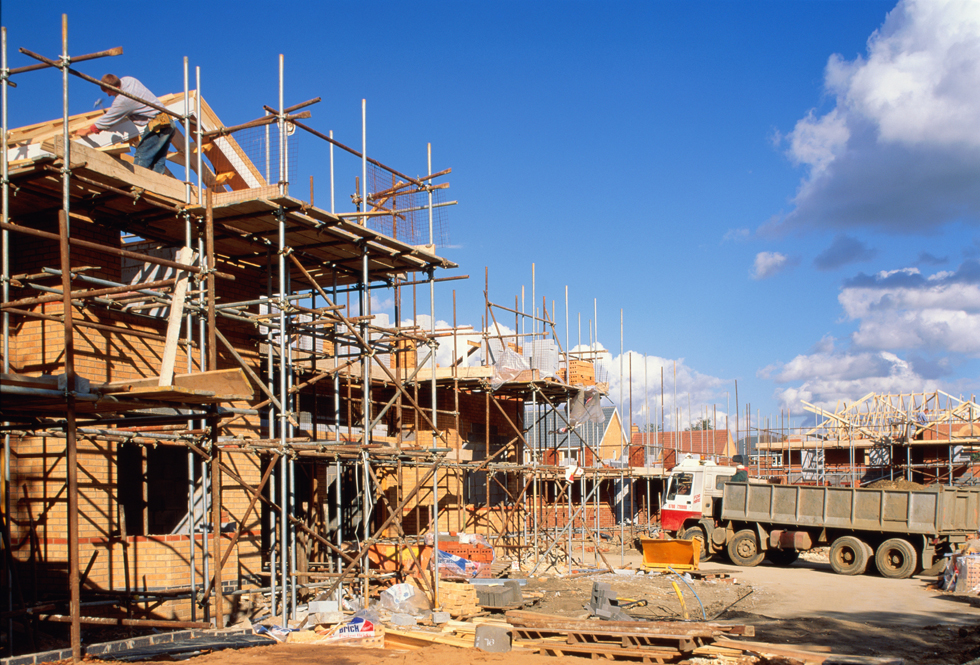National Planning Policy Framework: What's in the updated planning policy?
The National Planning Policy Framework has been updated with major changes announced for those looking to gain planning permission

The National Planning Policy Framework (NPPF) is the cornerstone of England's planning policy, guiding local authorities in making critical planning decisions.
A new December 2024 overhaul has introduced bold changes aimed at solving the nation’s housing crisis, with housing approvals falling to their lowest level in over a decade and increase the number of affordable housing.
We look at the changes to the NPPF, how these changes could influence how people gain planning permission and the industry reaction to the changes.
What is the National Planning Policy Framework?
The National Planning Policy Framework sets out the government’s planning policy for housing, as well as topics including business, transport and the natural environment.
It provides councils with the framework they use to create local plans and approve or reject development applications.
Originally established in 2012, the NPPF has undergone several revisions, with major updates in 2018, 2019, and 2021. The latest updates – announced on December 12, 2024 – introduce mandatory housing targets, reformed greenbelt policies and increased focus on affordability and high-quality design.
Prime Minister Keir Starmer stated: “For far too long, working people graft hard but are denied the security of owning their own home. Our Plan for Change will overhaul the broken planning system, putting builders – not blockers – first and making the dream of homeownership a reality.”
Bring your dream home to life with expert advice, how to guides and design inspiration. Sign up for our newsletter and get two free tickets to a Homebuilding & Renovating Show near you.
Deputy Prime Minister Angela Rayner described the updates as a "landmark overhaul" of a "broken planning system" to address the housing crisis and drive sustainable development.
What’s included in the new revision?
Mandatory housing targets
To tackle the chronic housing crisis, councils are now required to meet new mandatory housing targets. These targets emphasise growth in areas with high unaffordability and aim to deliver 1.5 million homes by the next parliament.
Councils will face stricter deadlines:
- Areas must adopt local plans within 12 weeks of the updated NPPF or face government intervention.
- Councils using outdated plans from July 2026 must provide an additional year’s housing supply pipeline.
A 'Golden Rules' approach to greenbelt development
The revised NPPF retains its commitment to prioritising brownfield development but introduces a pragmatic approach to the greenbelt. Councils must review "grey belt" land and balance development with strict requirements, such as:
- Infrastructure provisions (e.g., schools, transport, GP surgeries).
- Premium social and affordable housing contributions.
- Any greenbelt development must comply with "golden rules" to protect the environment while addressing housing needs.
Brownfield development
The government reaffirmed its “brownfield first” policy, streamlining approval processes for urban sites via initiatives like "brownfield passports." These measures aim to fast-track housing approvals and maximise urban land use.
Permitted development and Article 4
Local authorities can now prevent unsuitable Permitted Development conversions of non-residential properties into homes using Article 4 directions, but only under specific conditions.
Councils’ funding boost
To help councils deliver on these reforms, the government has pledged:
- £100 million in 2025 for staff and resources.
- Increased planning fees and 300 additional planning officers to ensure approvals are not delayed.
New growth areas
A focus on creating New Towns will aim to drive large-scale developments, each accommodating at least 10,000 homes, supported by transport and public services.

National Model Design Code
In a separate document, the government also published a National Model Design Code (NMDC) to help local authorities produce their own design codes and emphasise the approval of practical, sustainable designs while rejecting poor-quality designs.
The code also includes references to custom and self build, with accompanying guidance underlying how design codes can encourage self build and custom build developments.
Industry reactions to the latest NPPF changes
The government’s recent update to the National Planning Policy Framework has drawn mixed reactions from key figures across the housing and planning sectors. The changes have been praised for their ambition, but challenges remain, particularly around implementation and consistency.
Glen Richardson, Associate Partner at estate agents Carter Jonas, commended the removal of subjective terms such as “beauty” and “beautiful” from the final NPPF draft, explaining that such language could have led to “lengthy and unproductive discussions” during planning applications or appeals.
He welcomed the stronger emphasis on brownfield redevelopment, particularly Paragraph 125c, which shifts the language from “acceptable in principle” to “approved unless substantial harm would be caused.” According to Richardson, this clarification could accelerate planning approvals for urban brownfield projects, though he noted: “Developing brownfield sites is rarely straightforward, so the real-world benefits of the wording change remain to be seen.”
Peter Canavan, Partner at Carter Jonas, stressed the need for policy consistency, pointing out that “continuous tinkering” disrupts the delivery of new homes. While welcoming the focus on housing delivery and the reinstatement of the five-year housing land supply measure, he called for stricter sanctions against local authorities that fail to meet housing targets during the extended transition period.
On the Grey Belt policy, Canavan observed: “I think on the whole, it is a good idea, but it will be something to get used to, and something that will be difficult to apply consistently, certainly in the early days.” He also welcomed the shift away from blended land values in viability assessments, noting the 15% increase in affordable housing requirements as “achievable but requiring careful consideration on a case-by-case basis.”
Robert Wofinden, Partner and Head of Residential at the lawn firm Browne Jacobson, highlighted the potential for legal challenges resulting from the broadened definition of Grey Belt land. “Ambiguity around what is considered as ‘green belt’ or ‘grey belt’ will be a point of contention between developers, communities, and local authorities,” he explained.
He also stressed the need for additional resources to address planning bottlenecks. “More than 300 new planners (previously pledged by the government by 2026) will be needed to avoid a backlog,” he said, emphasising that while the NPPF changes are positive in theory, they are resource-intensive in practice.

Glen is an experienced urban designer and masterplanner with 32+ years in the public and private sectors, skilled in urban design, masterplanning, and detailed site design. He holds an MSc in Architecture (Urban Design) from Heriot-Watt University and is based in the Greater Cambridge Area.

Peter is a chartered town planner with over 15 years of experience across the public and private sectors, specialising in planning policy, evidence collection, and analysis. He provides strategic planning advice to a diverse range of clients and regularly serves as an expert planning witness in appeals.

Robert is a top-ranked commercial property expert with over 18 years of experience, specialising in property development, strategic land transactions, and a broad range of commercial, agricultural, and energy matters. Rob’s expertise includes advising on conditional property agreements, land transfers, and renewable energy transactions.
With these new updates to the National Planning Policy Framework, self builders and developers have the opportunity to potentially gain planning permission more easily.
Whether you're designing your dream home or just staying informed, understanding these changes is key to making your project a success.
Stay tuned for more updates and expert advice as the planning landscape continues to evolve.

News Editor Joseph has previously written for Today’s Media and Chambers & Partners, focusing on news for conveyancers and industry professionals. Joseph has just started his own self build project, building his own home on his family’s farm with planning permission for a timber frame, three-bedroom house in a one-acre field. The foundation work has already begun and he hopes to have the home built in the next year. Prior to this he renovated his family's home as well as doing several DIY projects, including installing a shower, building sheds, and livestock fences and shelters for the farm’s animals. Outside of homebuilding, Joseph loves rugby and has written for Rugby World, the world’s largest rugby magazine.
